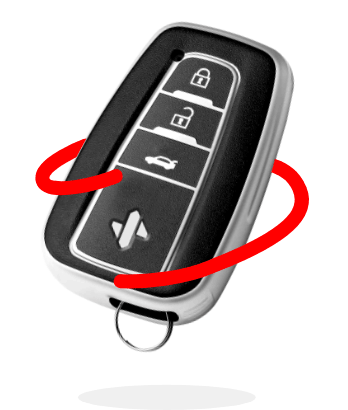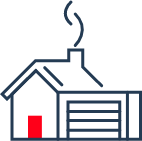As a homeowner, do you know what your homeowners insurance declaration page is?
If not, it's important to understand what it is. In short, a home insurance declaration page summarizes your insurance policy, and it's important to review it carefully to ensure you have the coverage you need. In this post, we'll explain what a declaration page is and highlight some of the information you'll find on it.
WHAT IS A HOME INSURANCE DECLARATION PAGE?
You already know that homeowners insurance is one of the most important things you can purchase for your house. It not only protects your investment, but also gives you peace of mind in knowing that you and your family are covered in the event of an accident or natural disaster.
In essence, your homeowner's insurance policy is a contract between you and your insurance company; it outlines the coverage you have purchased and the terms and conditions of your policy.
The most crucial document in your home insurance policy is the declarations page, sometimes called the "dec page." This is because it contains a wealth of information about your coverage, including the types and limits of coverage, deductibles, and other important policy details.
Knowing what's included on your declarations page is essential for understanding the scope of your policy and ensuring you have the protection you need.
Let's take a closer look at what's included on a typical declarations page.
1. Named Insured
This is the person or persons who are specifically listed by name and afforded the broadest coverage under the policy. The named insured is also responsible for maintaining the policy.
2. Policy Information
Here, you’ll find general home insurance policy information, like your policy number and billing account number.
3. Insured Property
Since your policy covers a specific home or property, the dec page will clearly identify the address and type of residence where your coverage applies.
4. Policy Period
The declaration page will list the effective date of the policy and the expiration date. This information is important to know in order to determine the length of your home insurance coverage (and when it will renew).
5. Coverages & Limits
The coverage part of the declaration page lists the types of coverage you have and the limits on each type of coverage.
● The limit lists the maximum amount your insurance company will pay for each type of covered loss.
● The deductible is the amount you must pay out of pocket before your insurance coverage kicks in.
It’s important to understand your coverage and limits to know what is covered under your policy and what’s not.
6. Options & Endorsements
If you’ve added on any additional coverage or endorsements (such as hurricane insurance coverage), these might also be listed on your home insurance declaration page.
7. Premium
Your dec page will also clearly show your premium payment amount for the term of the policy.
8. Discounts
Your insurance declaration page will also list any discounts that have been applied to your premium for the current homeowners policy term.
Some common discounts that are used for home insurance premiums include:
● Multi-policy discounts (for having both your home and auto insurance with the same company)
● Claims-free discounts (for not having filed a claim on your previous policy)
● Loyalty discounts (for staying with the same company for a certain period of time)
By understanding the available discounts, you can be sure that you’re getting the most bang for your buck regarding your home insurance coverage.
9. Agent Contact Information
At the end of the dec page, you’ll find information for your insurance agency and your insurance agent, should you need to contact them for any reason.
WHAT IS NOT COVERED ON THE DECLARATION PAGE?
If you have multiple policies with the insurance provider (such as homeowners and auto insurance policies), you won’t see both policies on your home insurance declaration page. Instead, each policy will have its own unique dec page.
Additionally, depending on your policy setup, you may or may not see your add-ons and endorsements to your policy.
HOW CAN YOU GET YOUR DECLARATION PAGE FROM YOUR INSURANCE AGENT?
To access your dec page, refer to your homeowners insurance policy. The declaration page is often the first page of the policy.
If, for some reason, you can’t locate your dec page, simply contact your insurance carrier and request it. Alternatively, you may be able to log into your account online or via an app and access the declaration page from your policy itself.
WHEN DO YOU NEED YOUR DECLARATION PAGE?
You might want to refer to your home insurance declaration page for a number of reasons.
Here are potential times to refer to it:
● When you’re filing a claim
● When you’re renewing your coverage (and/or shopping for another policy)
● When you’re searching for specific information (such as coverage or limits)
In general, you’ll want the dec page in a safe, secure place so you can access it at any time.
CAN A DECLARATION PAGE SERVE AS PROOF OF INSURANCE?
You might need proof of insurance for your mortgage company (or other similar situations), so you’re likely wondering what counts as that proof.
So can your dec page serve as proof? The answer is simple: yes! Your home insurance declaration page can provide proof of insurance when needed.
As you’ve seen, the home insurance declaration page is an important part of your policy and can give you quick, valuable access to your homeowners insurance information.
If you need help finding the best homeowners insurance coverage for the best price, start by speaking to a SimplyIOA agent at 833.872.4467 or get a homeowners insurance quote online now.










